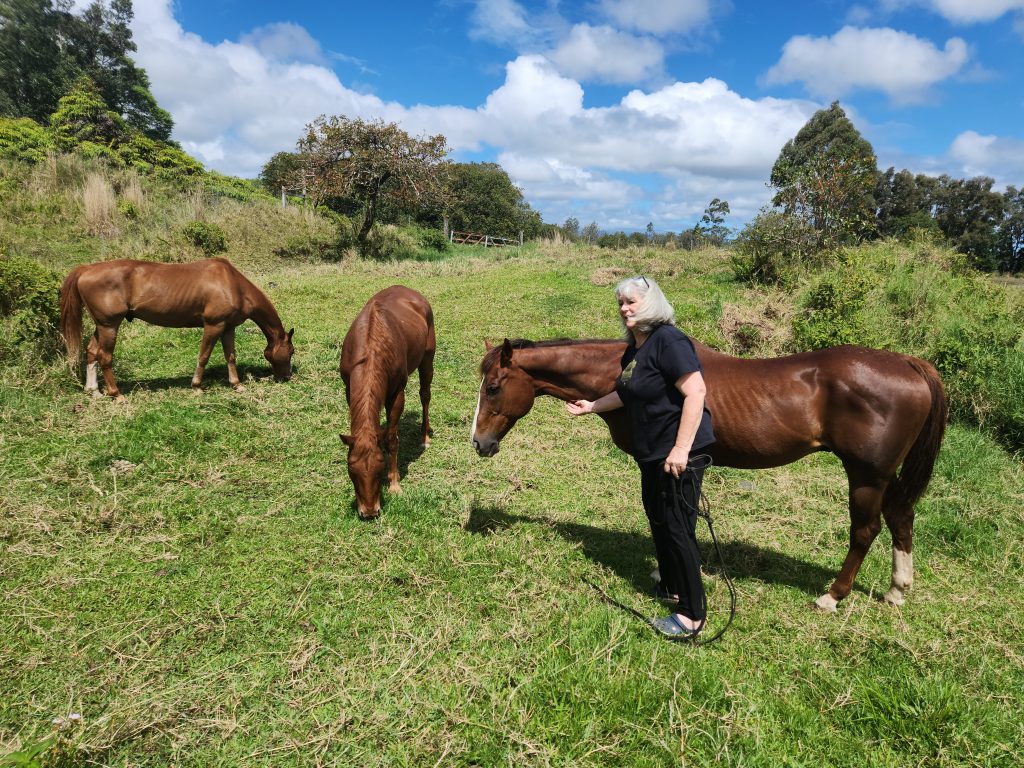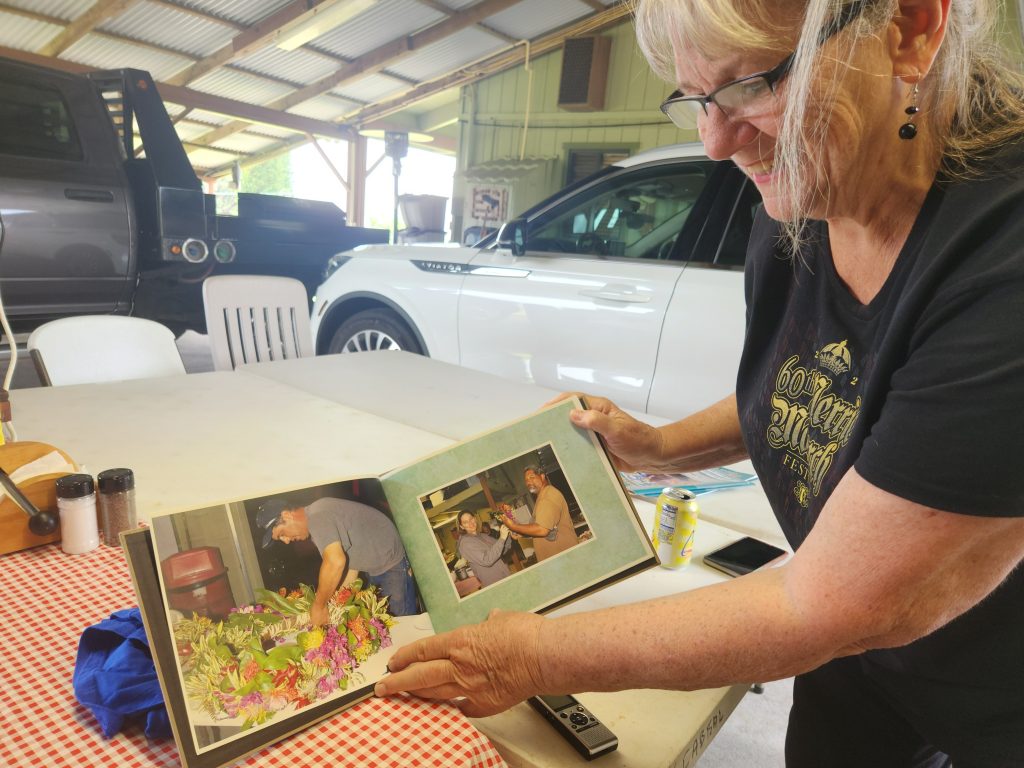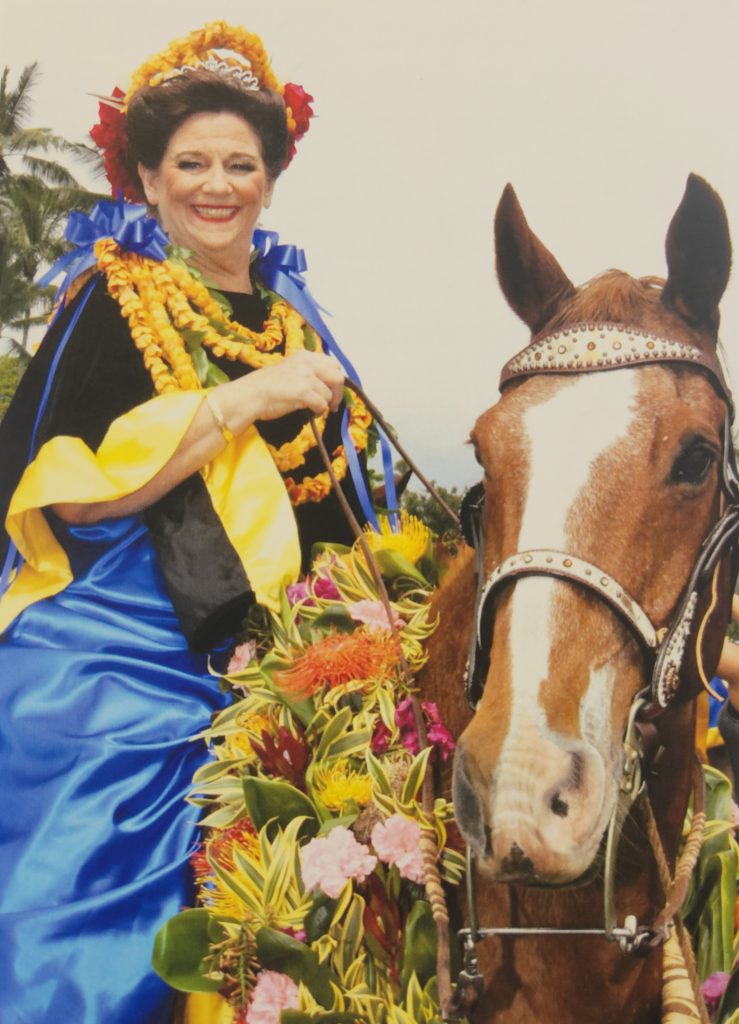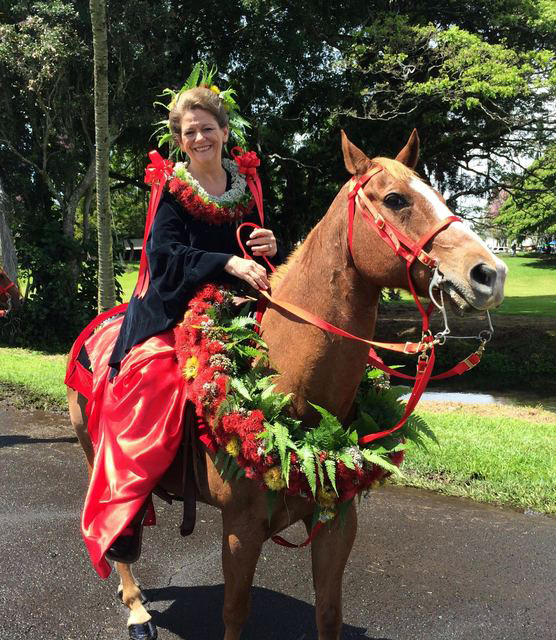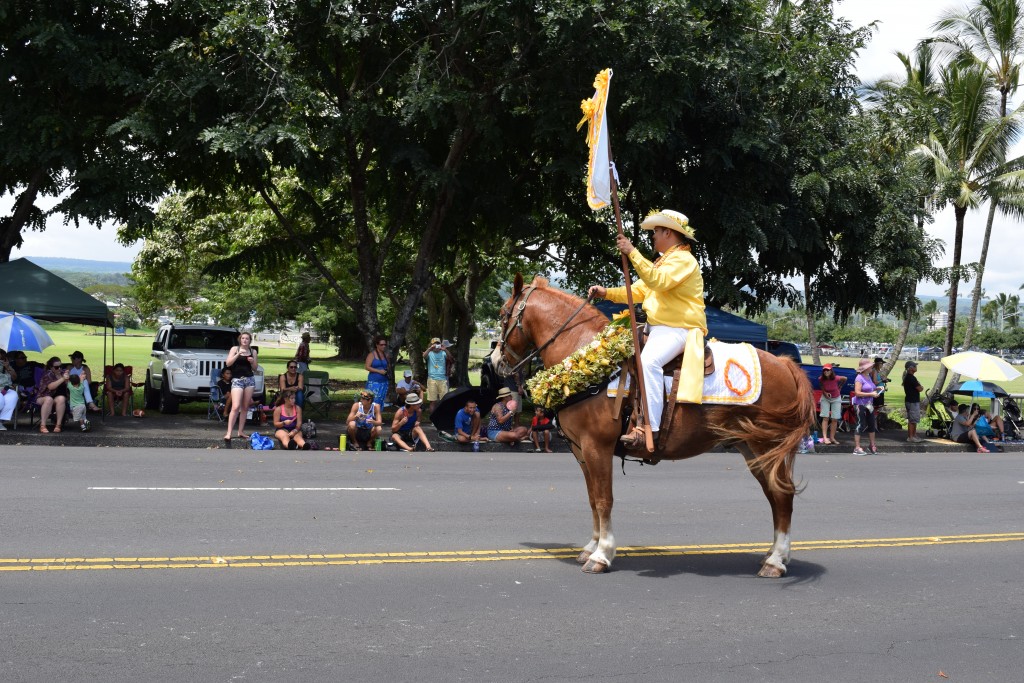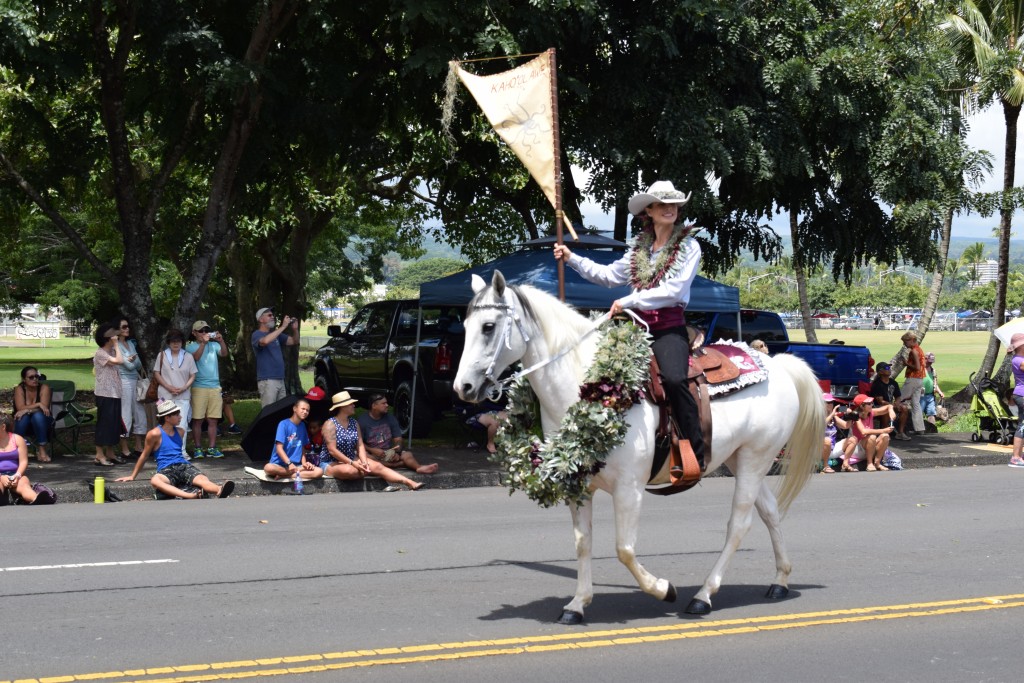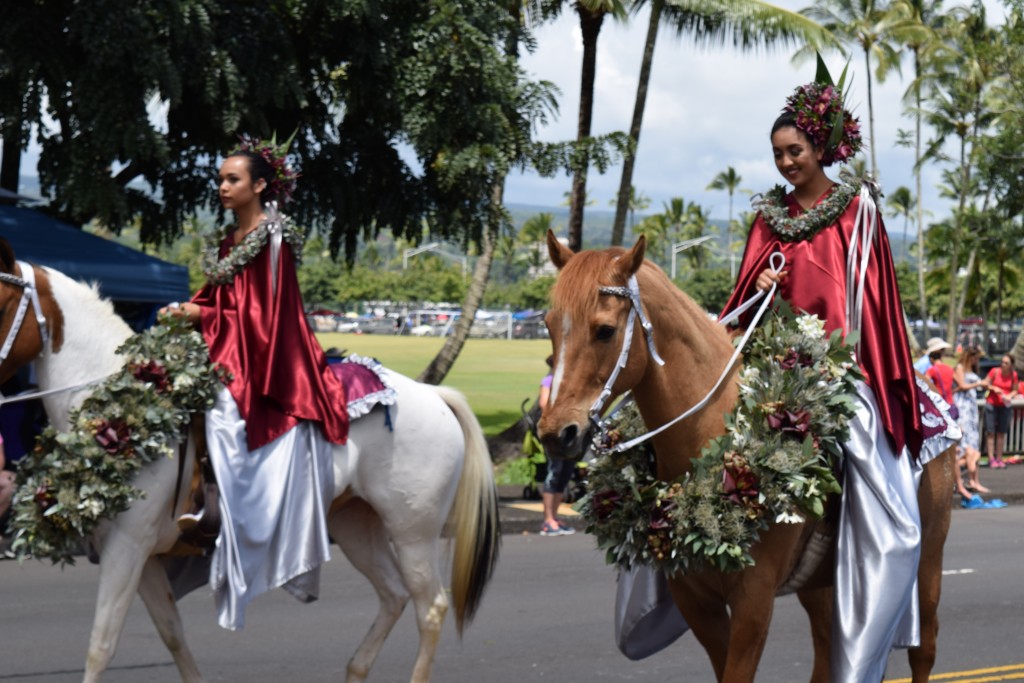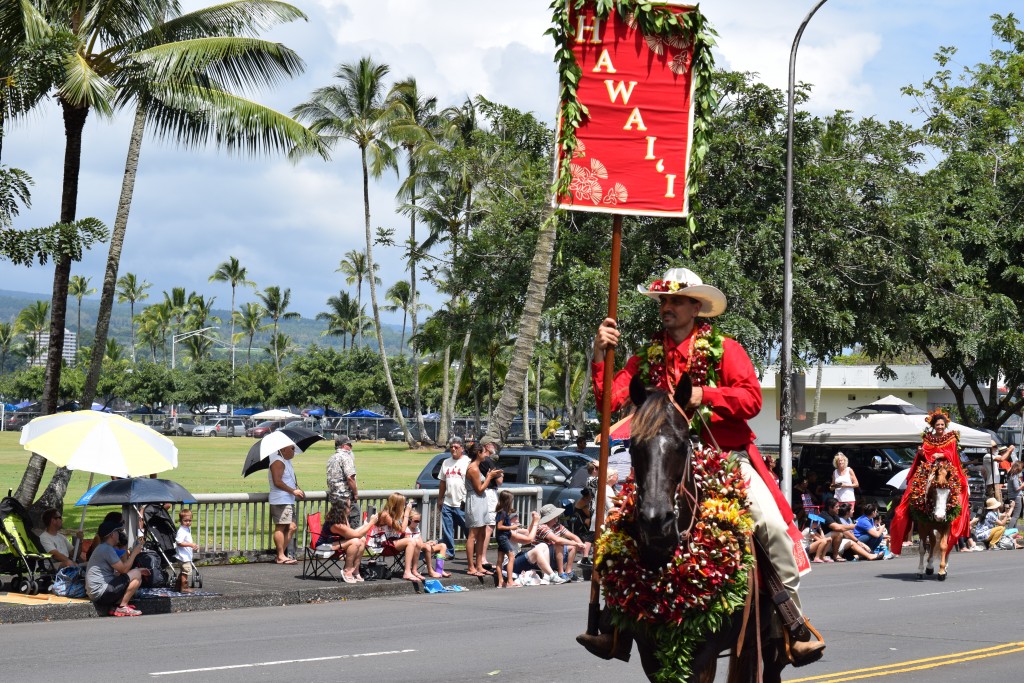Horses get regal treatment for Merrie Monarch Royal Parade
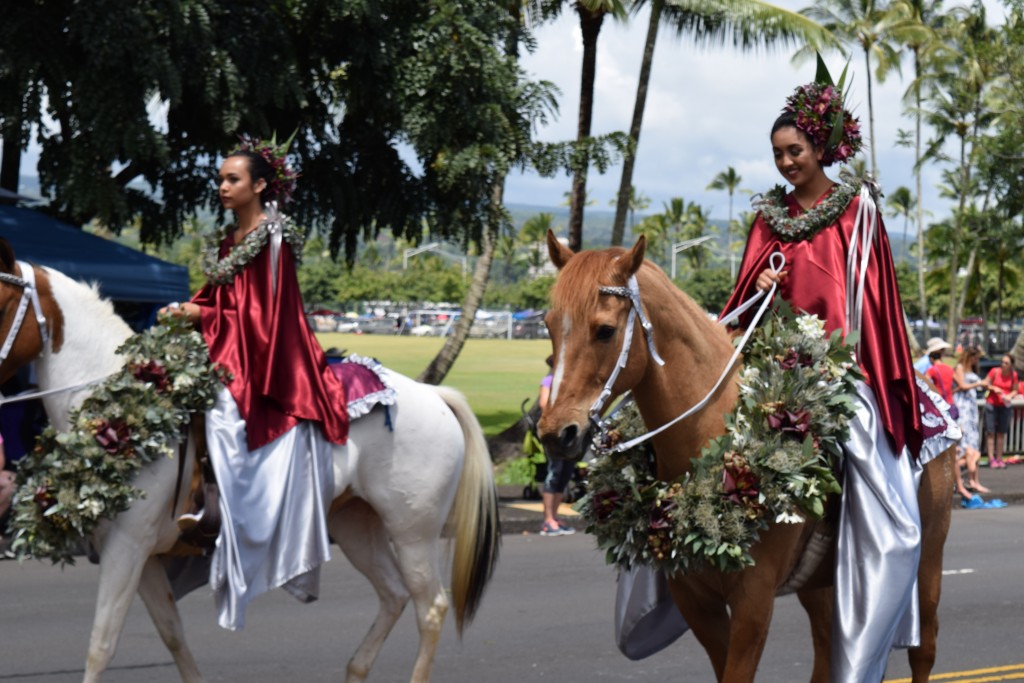
When you’re a beast of burden on the Big Island, you’re often saddled with carrying around paniolo (Hawaiian cowboys) and working on a ranch or farm. It’s not often you can get gussied up for a day on the town.
But if you’re one of the lucky horses tapped to trot in the annual Merrie Monarch Royal Parade, you get a day off from work and receive the regal treatment.
Whether it’s carrying a woman dressed in a long, colorful skirt (pāʻu) riding sidesaddle, or strutting their stuff as part of a private mount group, these mighty and majestic creatures are a large part of the event.
This year, more than 100 horses will be in the 2-mile parade, which also will feature decorated vehicles, floats and a whole lot of flowers. The parade is on April 15 at 10:30 a.m. It begins and ends at Pauahi Street, with entries marching along Kīlauea Avenue, Keawe Street, Waiānuenue Avenue and Kamehameha Avenue in Downtown Hilo. (For parking space closures for the parade, go to end of story).
They include Pepzi and Phoenix. Pepzi is a brown quarter horse, with white socks and a white stripe on her face, owned by Nancy Cabral of Hilo. Phoenix, also a brown quarter horse, is owned by Cabral’s grandson and ranch manager Justin Cabral.

Pepzi has been in the parade many times, but this will be Phoenix’s first appearance. They will be marching with the private mount group from the Hawai‘i Horse Owners Association, of which Nancy Cabral is a member.
Cabral has been involved with the Merrie Monarch parade for 34 years, either riding or helping backstage. She said: “When you’re in a parade, you’re on stage. You’re in a show.”
Thus, the horses in the spotlight need to look their best. Pepzi, Phoenix and all the equine parade participants get a mini makeover. They will be bathed, groomed and have their manes and tails detangled. They’ll also have their legs wrapped for the show and even get their hooves polished. As Cabral puts it: “A little pedicure for the horsies.”
That’s just the basics. Depending on the group or if they are carrying pāʻū riders — the princesses representing each of the eight Hawaiian Islands, the Pāʻū Queen (Cabral was queen in 2016 and has been princess for several island units through the years) and their mounted courts — the horses can be decked out in even more royal fashion. That could include decorated headstalls, handmade lei and bridles and saddle pads that match the colors worn by their riders.
The horses in the pāʻū rider groups also are followed by a royal scooper to clean up the inevitable.
It takes a special horse to be in such a special event. They have to be comfortable traveling in a trailer and being around other horses. With people sometimes as close as 5 feet away from them along the parade route, Cabral said the riders and horses also have to be careful. You can’t control the noise and the crowds watching. Since horses are flight animals, prone to skedaddle if they get spooked, it’s important for the rider and mount to stay calm.
Pepzi has been in at least 13 parades between her previous owner and Cabral. The 15-year-old is a good example of a horse with the right temperament and experience. But “any horse is a good horse if it’s going to be calm and controllable,” Cabral said. In the end, “the horse decides who’s going to ride.”
Even when those boxes are checked, everything doesn’t always go off without a hitch.
A horse could end up eating half of your neighbor mount’s lei as you’re marching — horses really like ti leaves, according to Cabral — or the horse you planned to ride could come up lame, favoring one leg, and force you to find a different ride at the last minute. Both scenarios have happened to Cabral.
One year, a rider fell off a horse after it reared up near the last turn of the route. The mount proceeded to run down Hilo Bayfront and got as far as the intersection of Kamehameha Avenue and Pauahi Street, near where the parade is staged, before being corralled by a couple of Hawaiʻi Horse Owners Association riders with ropes.
Cabral said in a parade horses don’t like to stop. Once they make the last turn from Waiānuenue Avenue onto Kamehameha, it’s almost like they think they’re heading back to the barn and they pick up the pace.
The 70-year-old Cabral teared up as she talked about the meaning of being in the parades, saying it is an honor to pay tribute to the “wonderful, beautiful culture around us” in Hawaiʻi.
“Since we’re here in Hilo, to be a rider at the Merrie Monarch parade is just the ultimate on this island for sure,” she said.
It’s a lot of work but also a lot of fun, including for the horses.
“Horses are herd animals, so they get to kind of be with other horses,” Cabral said. “They don’t always act like it, but I think they like the attention.”
Parking for the parade:
Parking space closures will be in effect from 7 a.m. to 3 p.m. on both sides of Kīlauea Avenue and Keawe Street between Ponahawai Street and Waianuenue Avenue. All marked parking spaces on both sides of Waianuenue Avenue between Keawe Street and Kamehameha Avenue will also be closed.
All marked parking spaces reserved for persons with disabilities will remain accessible.
The stalls are being closed to ensure the safety of the 60th Annual Merrie Monarch Parade spectators and participants. The parade route closes to traffic at 10 a.m. with the parade starting at 10:30 a.m. Roads will reopen at 3:00 p.m.



